People always ask me how I stay so organized, and my answer is simple: I plan. I use both a digital calendar and a physical day planner to keep my days, weeks, and months organized. Today I’m sharing the benefits of using a planner; why I use two different methods to plan my life; my exact digital calendar and planner organization methods; and additional tips on planner organization. If you’re an entrepreneur, work from home, or just looking to become a bit more organized in you daily life, this post is for you.
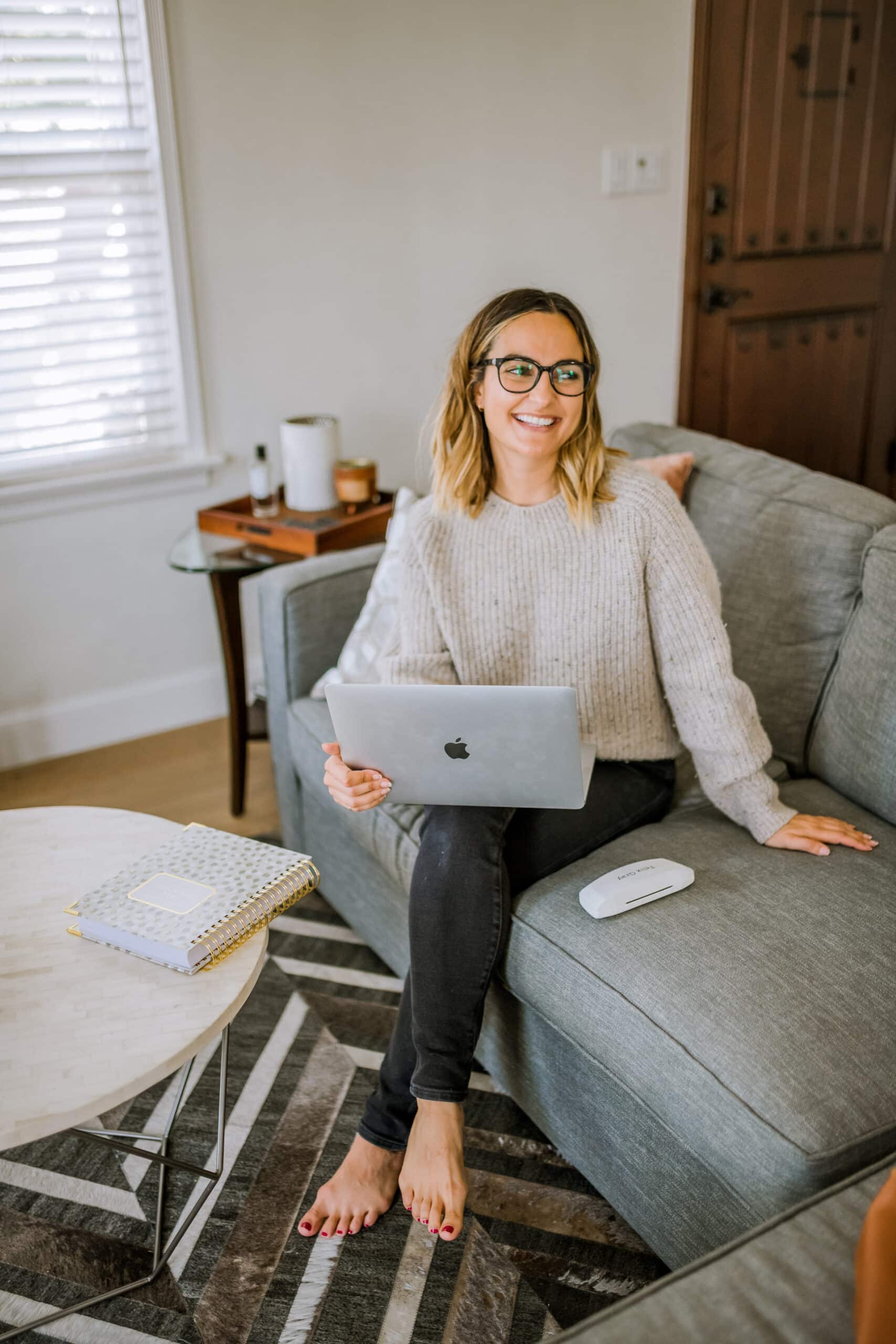
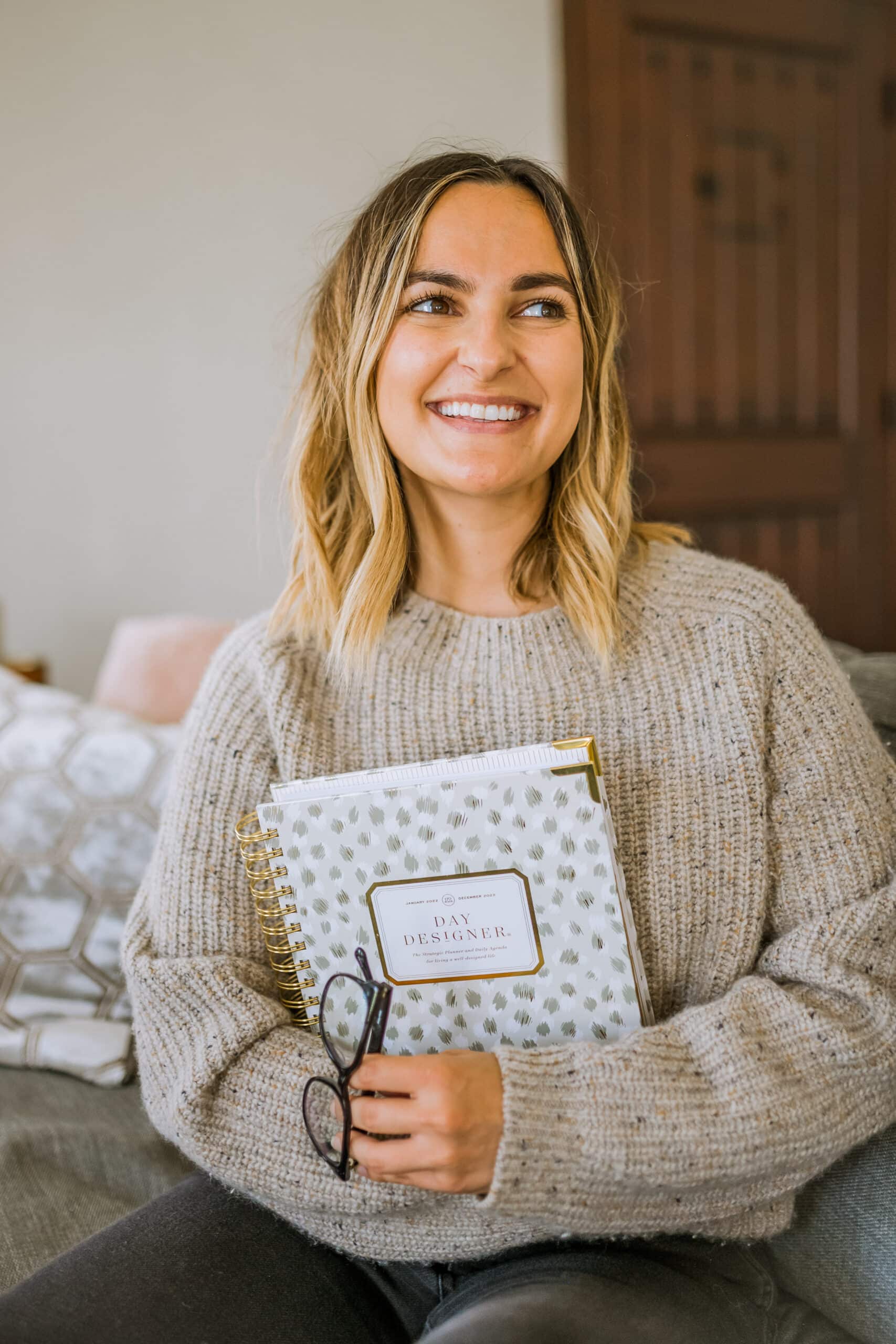

Successful Day Planner Organization Tips to Increase Your Productivity
As someone who runs two full-time businesses (as a blogger and a freelance photoshoot producer), there’s a lot of stuff to keep track of. Between deadlines for sponsored content and blog post schedules, plus client shoots and calls, there’s no way my brain can remember it all. Let’s not forget all of my personal tasks and appointments, either.
When I worked in an office, I had a planner for daily tasks and wrote in work deadlines. I’ve always been organized, but my work life and office life were always separate and so my planner organization methods were much simpler since when both worlds had their own space.
However, when I started working from home several years ago, both blended together and I needed to figure out a way for all aspects of my life to co-exist while being productive and having personal down-time. (I wrote an entire blog post on tips to stay productive when you’re working from home, which you can read here.)
I’ve experienced a lot of trial and error over the past years trying to find the best way to organize and plan my days. Below is what I have been doing religiously for over a three years now. There’s a lot of information to digest here, but hopefully will help you when it comes to planner organization for yourself.
The Benefits of Using a Day Planner
- Increased organization. My Day Designer day planner is my holy grail. Obviously, using a planner is made to help you organize your life (hence why they even exist in the first place).
- Increased productivity. You know that saying where if you can see everything in your closet, you’re more likely to wear it all? If you can see everything you need to do, you’re more likely to hunker down and get things completed. I highly recommend you find a planner that has columns for appointments and to-do items, this way you can quite literally see times of day you’ve already committed to, and what is left to do.
- Accountability for me-time. I’ll touch on this a bit later, but when you’re staring at a day’s worth of tasks, you’re able to figure out when you can have your personal time. Personal time should never be forgotten!
- You can clear out your brain. I’m a believer that your brain can only be packed with so many things to remember at once. Every time you write something down in your planner, you’re able to “free up hard drive space” in your brain.
- You’ll be less stressed. This piggybacks off of my last point. I hate that feeling of, “I know I had to do something, but I forgot.” Avoid that uncomfortable lingering feeling by using a planner.
Why I Use a Digital Calendar and a Day Planner
I know I probably sound crazy admitting that I use a digital calendar and a day planner, but there’s a method to my madness.
With the type of jobs I lead, my deadlines are constantly changing. As a freelancer, I have no master company calendar or schedule to adhere to, so I quite literally must make my own.
Here’s the big difference on how I use both a digital calendar and a day planner:
- My digital calendar is a tentative, big picture road map for the months and the year. Because I work in the digital space, deadlines are always moving, and often times aren’t set in stone until just days or a week in advance. I like keeping my day planner as clean as I can. With a digital calendar, I’m able to cut and paste to move tasks and deadlines as much as I want until they become more “final.”
- My day planner allows me to focus on the individual days in the weeks, with specific tasks to do that complete the deadlines set in my digital calendar. This is much less overwhelming for me to work this way. There’s lots of daily fluidity here, depending on what does or doesn’t get done the day before or specific things that may come in day of that I need to handle.
Planner Organization: How I Use Each Method
How I Use a Digital Calendar
For my digital calendar, I download a free Excel template from WinCalendar. (I prefer the Excel version, with holidays, in landscape format. This exact calendar can be found at the bottom right of the page called “2021 Calendar.”

Download the digital calendar I use here | Buy my exact day planner here
I prefer the Excel version of this calendar (vs. Word) because I like to use each cell as an item. You can easily add in as many extra cells to the week as you need. It’s also easy to color code cells so you can instantly identify categories with a quick glance.
What Goes on my Digital Calendar?
- Vacations. For every day I am on vacation, I mark it in this calendar, then visually block it out.
- Days that blog posts go live. My entire editorial calendar for blog posts goes into my digital calendar so I can see and keep some type of cadence for them. Many of my posts are based on seasonality, so I’m able to slate in topics in advance, then fill in the gaps for posts as needed.
- Photoshoots for my blog. Since I’m able to easily view high-level dates on this calendar, I can also easily tell when I’m going to need new content for my blog, and when I need to schedule a shoot.
- Due dates for when I need to email sponsored content for approval, and “go-live” dates for said content. When working with a brand to promote things on Charmed by Camille, I’m usually given specific deadlines and ranges of go-live dates.
- Client shoots. Once I’m hired to produce shoot, I make sure color-block cells to indicate client photo shoot days on my digital calendar. These are always priority dates, so I adjust other things like blog posts and what not around them.
- Any random to-dos that I may have in the moment and will probably forget later. This can range from anything like a blog post topic idea or a reminder that I want to post a certain photo for something on Instagram that day.
All of the above constantly shifts, so for me I like the ease of digitally moving things all around. I have my digital calendar open every single day. It’s constantly updated. It’s also much cleaner and quicker to copy and paste than to erase and re-write all the time.
Color-Coding my Digital Calendar
The big thing here I want to note is the importance of color-coding. By color-coding, I’m able to instantly see my general workload by category just by looking at the colors.
The photo below is a portion of my October 2020 calendar. Here’s how I use color coding for my categories:
- Filled-in red cells: vacations
- Black bold text: blog post live dates
- Black bold text with strikethrough: blog posts I’ve written and scheduled
- Light blue bold, italic text: blog photoshoots
- Italic red text: due date reminders to send content approval to a brand, etc
- Filled-in light blue cells with white text: dates to publish sponsored content (either on Instagram or my blog)
- Filled-in light red/coral cells: client photo shoots
- Regular, black text: random to-dos
As you can see, stuffing all of this into a day planner and then shifting it around almost daily can get time-consuming, overwhelming, and sloppy. Therefore, I wait until I’m about a week out to write out specific, daily tasks in my day planner.

Download the digital calendar I use here | Buy my exact day planner here


My Day Planner Organization
My physical day planner is small snapshot of individual tasks I need to complete in order to make that big digital calendar fall into place.
For me, my preferred day planner is by Day Designer. I use the original daily planner. There are a few main reasons I love this planner. First, there’s ample space to write out your tasks. Second, there’s a dedicated hourly column for appointments, calls, and anything with a time. Finally, while there’s additional space for gratitude or dinner, it’s (for the most part) not stuffed with a bunch of other bells and whistles that I won’t ever fill in or use. I have tried everything from a lined notebook to a traditional planner, to an Erin Condren planner, and Day Designer is the best of all worlds.
Create a Routine
Other than writing in appointments, calls, and meetings as they get scheduled, my routine for day planner organization is pretty cyclical.
I try to take time on Friday before my brain turns to weekend mode to look at my digital calendar, see what’s been finalized for the following week, then plug what I need to do. I do this on Friday, before the weekend, because I’m still in a business mindset.
On Sunday evening I’ll take a few minutes to glance at what’s on my plate for Monday just so I start the work week ready to go.
Other than that, my week days pretty much go like this: look at planner in the morning, complete tasks during the day, take time to plan for next day in the evening.
Every morning, the first thing I look at is my appointment column. I love this column because I can clearly see when I have obligations that can’t be intruded upon, and where I have gaps in my day. From there, I’ll tackle everything in the “to do” column on the right during the gaps.
An unsurprising and ironic key to planner organization is to leave time to plan. At the end of each day, I take a task inventory on what didn’t get done. I’ll then re-write those tasks for the next day, or re-prioritize when they need to get completed for a different day. I also reference my digital calendar to see if there was any big shift made there that day, and adjust my daily planner tasks accordingly.


Download the digital calendar I use here | Buy my exact day planner here
Write Out Individual, Actionable Tasks
While my digital calendar has high-level things like due dates, my planner has actionable items. Using the example from my digital calendar above, I planned to have my Halloween Charcuterie Board blog post go live on October 8. My end goal was to get that blog post live, and there were 4 tasks that had to happen to make that possible:
- Make charcuterie board
- Take photos of board for blog post
- Edit photos for blog post
- Write Halloween Charcuterie blog post
I break tasks into very small individual parts because often I can’t get every aspect of a project done at once. Maybe I only had time on Monday to make and photograph the board but couldn’t edit or write the blog post until Wednesday. If I had just written “Halloween Charcuterie blog post” in my calendar, then I’d have to use brain space each time I saw that written to remember what had or hadn’t been done. Remember, we’re trying to free up space in your brain!
Use verbs when writing out your tasks so you know exactly what you’re doing. Are you emailing? Following up? Calling? Editing? Specify the action.
Focus on Your Priorities
Clearly appointments, calls, and meetings can’t be missed, so they automatically fall into the priority calendar. Done. Easy. For your to-do list, pick three things that must get done that day. This helps to create a starting point when tackling your list, and is especially helpful if you’re overwhelmed by it.
My Day Designer planner has a dedicated spot for top three tasks, which is great. Personally, I only utilize this spot when I know of a top task ahead of time. I like to see everything I need to do in one list. I put everything in the same “to do” column and simply highlight 3 must-do items for that day. If I’m still feeling overwhelmed after finishing my three top tasks, I highlight a couple more tasks to focus on. If I’m feeling okay, then I’ll just get to it and complete the remaining tasks without further prioritizing.
By identifying three things you need to get done each day, you avoid the feeling of, “I don’t know where to start.”
I don’t color code my day planner. I’ve tried to, and personally found that when writing tasks out, it wasted more time than helped me. However, if you want to, obviously go for it!
Don’t Forget to Schedule Your Mental Health
Mental health, me-time, whatever you want to call it, it’s important that you have and make time for it. I like working out, and I like working out in the morning otherwise I won’t do it. Know thyself.
Schedule in whatever me-time you need, when you need it – before your calendar fills up. Treat it just as you would for a doctor’s appointment or work call. Then when something pops up, you can immediately look at your calendar and know you’re booked.
Appointments with yourself aren’t vain. I’d block out my calendar at least once a week when I worked in an office. Often times I was the only way I could secure valuable work time uninterrupted by meetings.
Buffer Days with Wiggle Room
As we know, unexpected things always come in day-of that you must address. I never try to stuff my day full and always allow some wiggle room for when this happens.
I generally know how long a blog post takes me to write. Certain follow up emails will only take a few minutes to compose. For projects like photography or brand outreach, I’ll give myself a time limit. This way, I don’t waste half the day on one thing. By doing so, I’m able to estimate how many hours I’ve already filled up up in a day. I try to plan for an hour or two for unexpected, day-of tasks.
I also plan this wiggle room for any tasks tasks that I didn’t complete the day before and had to roll over.
Key Takeaways for Planner Organization
Here’s a quick snapshot at my top tips for successful planner organization:
- Use a digital calendar for high-level things if you have a lifestyle or job where things are constantly changing
- Use a day planner to focus on daily, small tasks
- Color code as you see fit, so you can easily identify categories in your life
- Write out small, individual tasks with verbs to incite action (write, email, reply to, send, call)
- Keep appointments and generic daily tasks in the same spot so you have a full scope of your day in one place
- Choose three top tasks to focus on each day to start, then continue your list from there
- Schedule your workouts or me-time like you would any other appointment
- Leave wiggle room in your day for unexpected things that come your way
- Dedicate time at the end of each day to assess what didn’t get done, then write it in for the next day
If you try any of these out, I’d love to hear how they work for you!

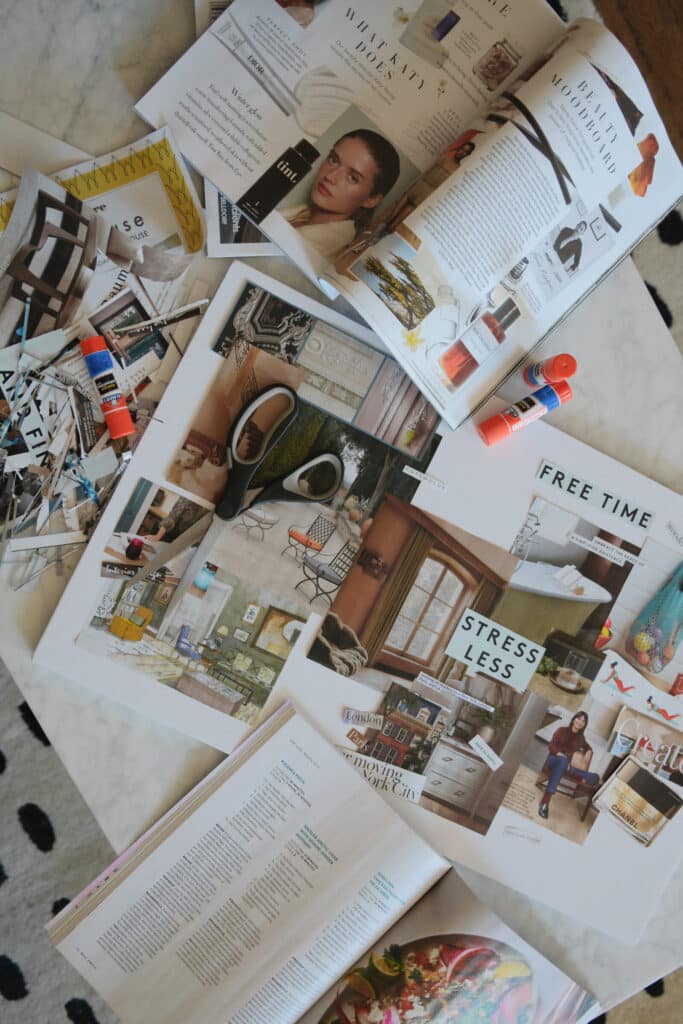

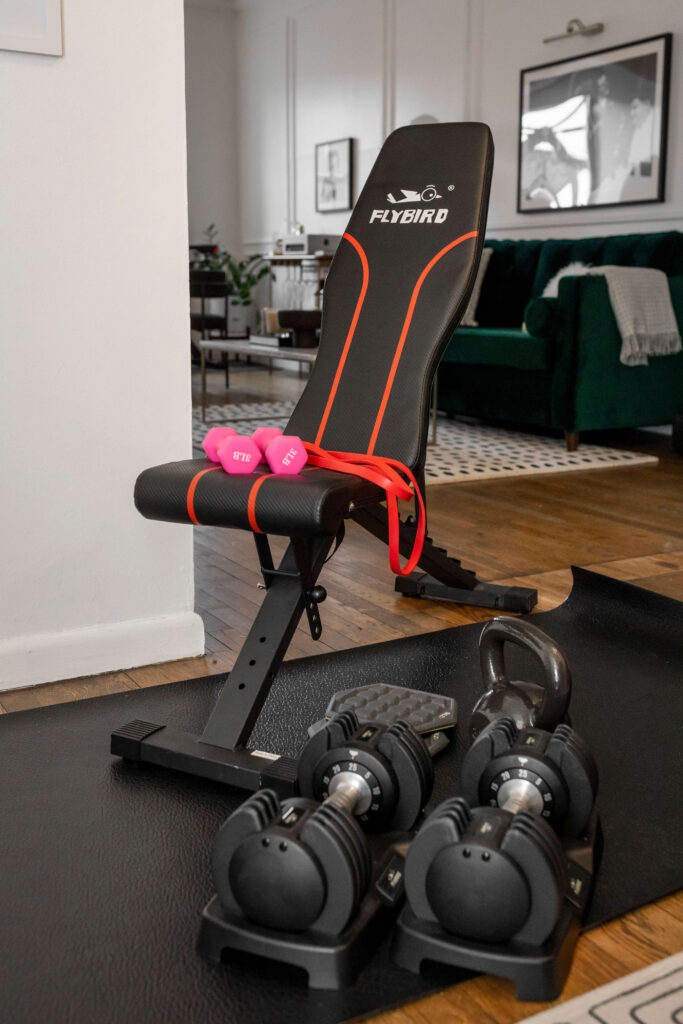


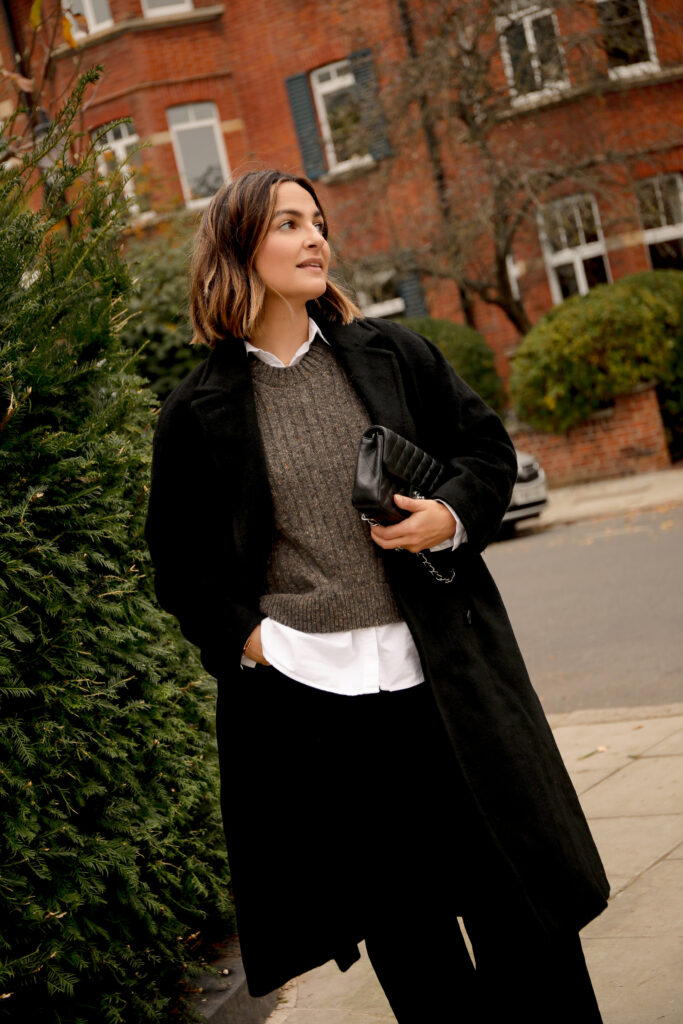

One Response
I have GOT to get better about planning. One of my goals for 2021 is to start using a physical planner for more smaller tasks to tackle. I live and die by my digital calendar but enjoy crossing stuff off on a piece of paper the most. Love how organized you are!
xo Jessica
an indigo day